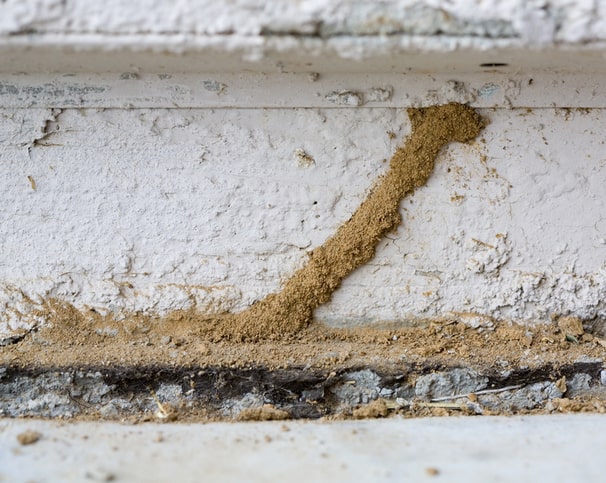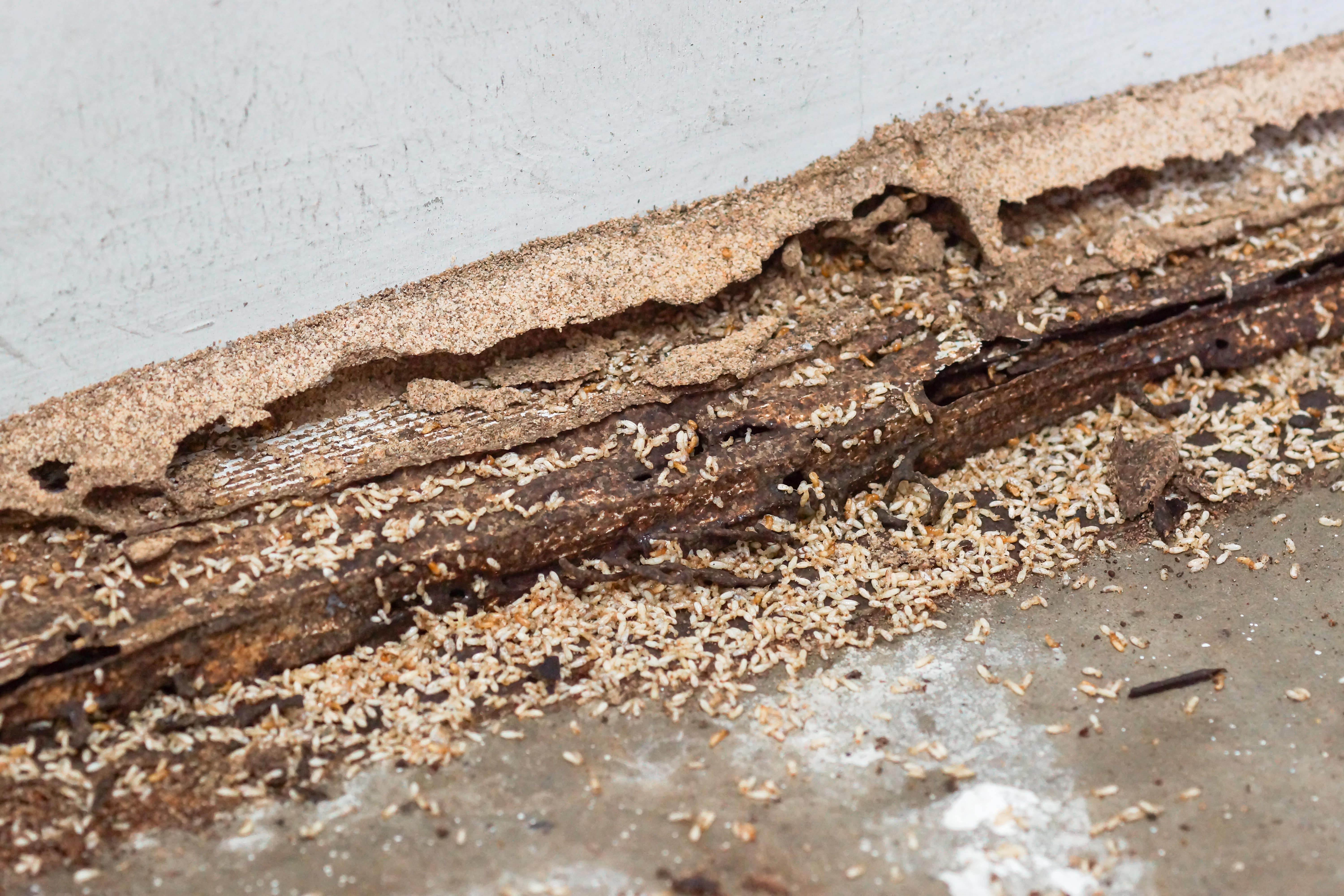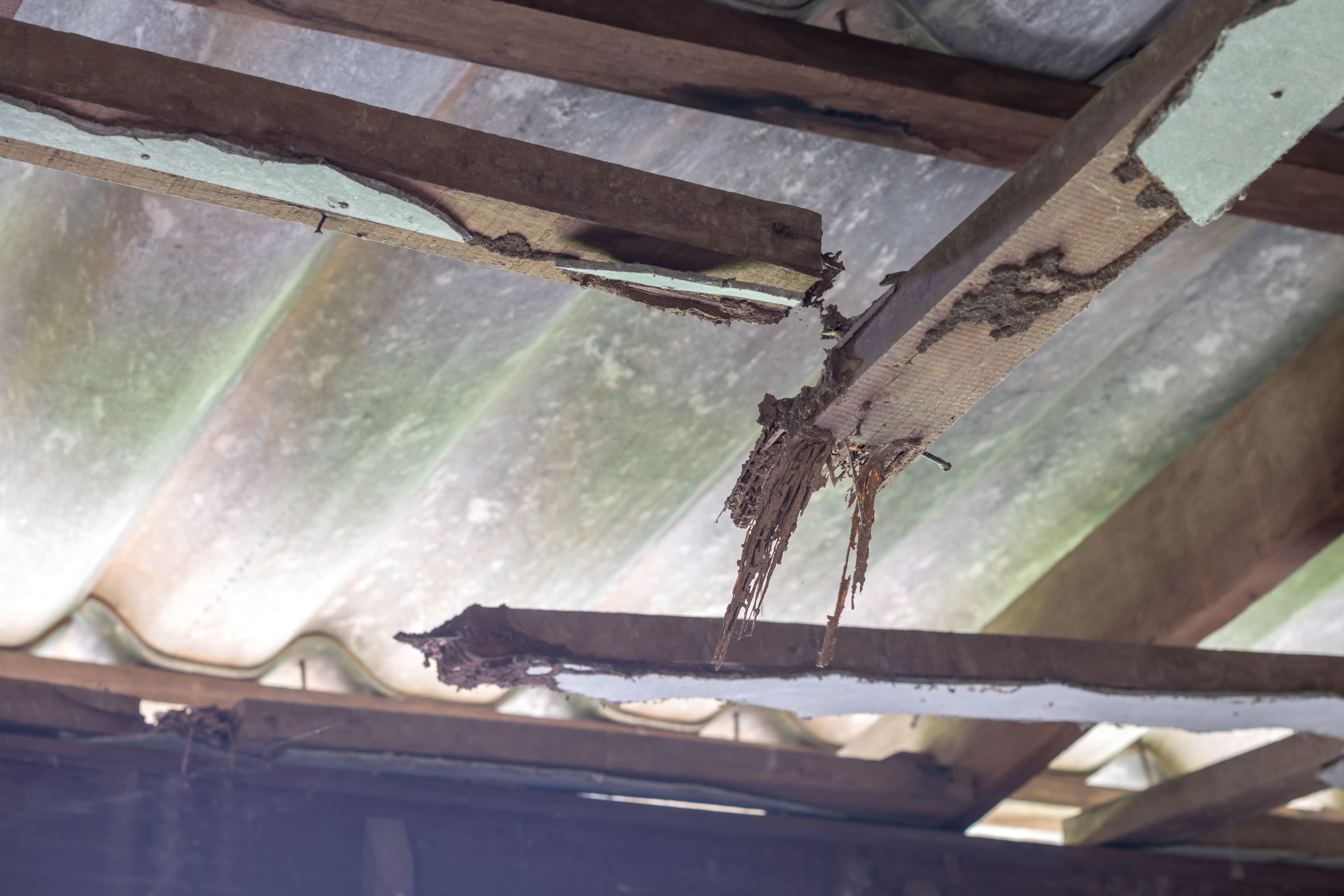Termite mud tubes are small tunnels that are located around termite nests. Learn how to spot a mud tube and what to do if you’ve found one near your home.

Contributed by: Doug Webb
Updated on: October 26, 2022
Think termite mud tubes are weird? There are more than 232 miles of train tunnels used by New Yorkers daily to travel underground. In the chilly Canadian town of Moose Jaw, people travel to work in tunnels to avoid the cold. And just like humans, termites build tunnel-like structures, too. Learn more about mud tubes, what they look like and how you can use them to confirm if termites might be at work in or beneath your home.
What are termite mud tubes?
Termite mud tubes (also called termite mud tunnels) are small, pencil-sized tunnels made by worker termites made of small pieces of soil and wood, located around termite nests, wood structures and concrete or stone foundations. Mud tubes are most commonly used by subterranean termites, and are meant to help protect termites from predators and dry environments while traveling between a food source and the nest.
Subterranean termites need to maintain certain temperature and humidity levels in their immediate environment in order to survive. Made of saliva and fecal matter (which may contain wood), mud tunnels block out cool, dry air, creating an optimal habitat for these destructive pests. These mud tubes often have high humidity. You may see mud tubes anywhere the ground meets your house (i.e., around your foundation) or around another possible food source (wooden structure or tree).
If you spot termite mud tunnels, or anything that resembles them, you should contact a termite control professional immediately. Mud tubes are one of the top signs of a termite infestation, and it's important to treat the infestation before extensive damage is done to your home.
Termite mud tunnels vs. cocoons
Termites do not make cocoons. Although mud tubes and cocoons both protect their insect inhabitants, they aren't the same thing.
Insects that undergo complete metamorphosis — a life cycle that begins with the egg and then moves through the larval stage — spin silk cocoons to protect the pupa during this development stage in which the insect transitions into the mature adult stage. Butterflies, wasps, beetles and fleas all go through a pupa stage, and cocoons are a way that they protect themselves.
Unlike these other insects, termites do not undergo a complete metamorphosis, and instead, the termite life cycle consists of three stages: egg, nymph, and adult. This means that termite cocoons do not exist.
Related: What does a termite look like?
What do termite mud tubes look like?
Termite mud tunnels range from ¼ to 1 inch or larger in diameter and are most noticeable along a home's foundation or exterior walls. When searching a home for these tubes, there are four types to look for: working tubes, exploratory tubes, swarm tubes, and drop tubes.
Working mud tubes
Termite working mud tubes are the most heavily trafficked tubes that serve as a path between the colony's nest in soil or wood and sources of food. These working tubes are used by thousands of termites within a colony on a regular basis.
Exploratory mud tubes
A termite exploratory mud tube extends from the soil as far and wide as 15 feet above the surface level. Exploratory tubes are not as sturdy as working tubes and are on the fragile side. These tubes are only found in the soil and are a sign that termites may be deeply rooted on your property. By the time you find one of these exploratory tubes, they may have already been abandoned and termites have moved to a different part of your property in search of food.

Swarm mud tubes
Sometimes called “swarm castles," swarm mud tubes are tunnels made by worker class termites, serving as a temporary pathway during swarming season. These tubes allow swarming termites to migrate from the soil to a wooden structure as they begin establishing a new colony.

Drop mud tubes
Drop tubes give termites a path from wood back to the soil and any of the tubes and pathways at ground level. Drop mud tubes are similar in fragility to exploratory tubes. However, their distinguishing feature is that drop tubes look like stalagmites that jut from the bottom of a cave, with these tubes extending between soil and the wooden parts of your home.

Testing for active termite tunnels
It is possible to find a termite mud tunnel that is no longer active. To test for activity, break a center section of the tube off, leaving the front and back sections intact. If the mid-section of the tube is repaired within a few days, the termites are definitely still active, as nothing else could restructure the tube except termites. Sometimes you will see termites crawling out of the mud tube as soon as you break it open.
If you find termite mud tubes around your home, or suspect that you have an active termite infestation, seek professional inspection, identification, and treatment as soon as possible. Contact Terminix today and stop termites from invading your home.


